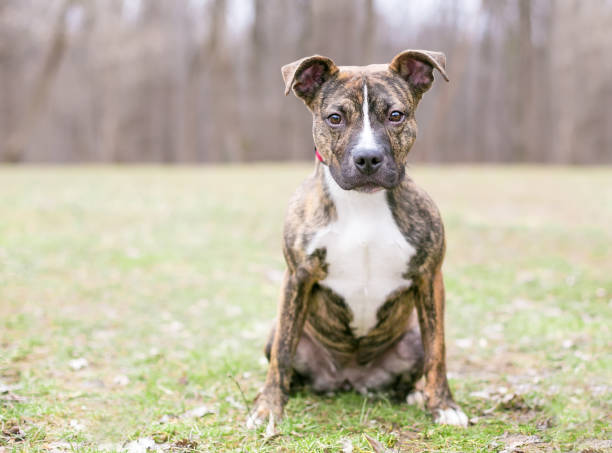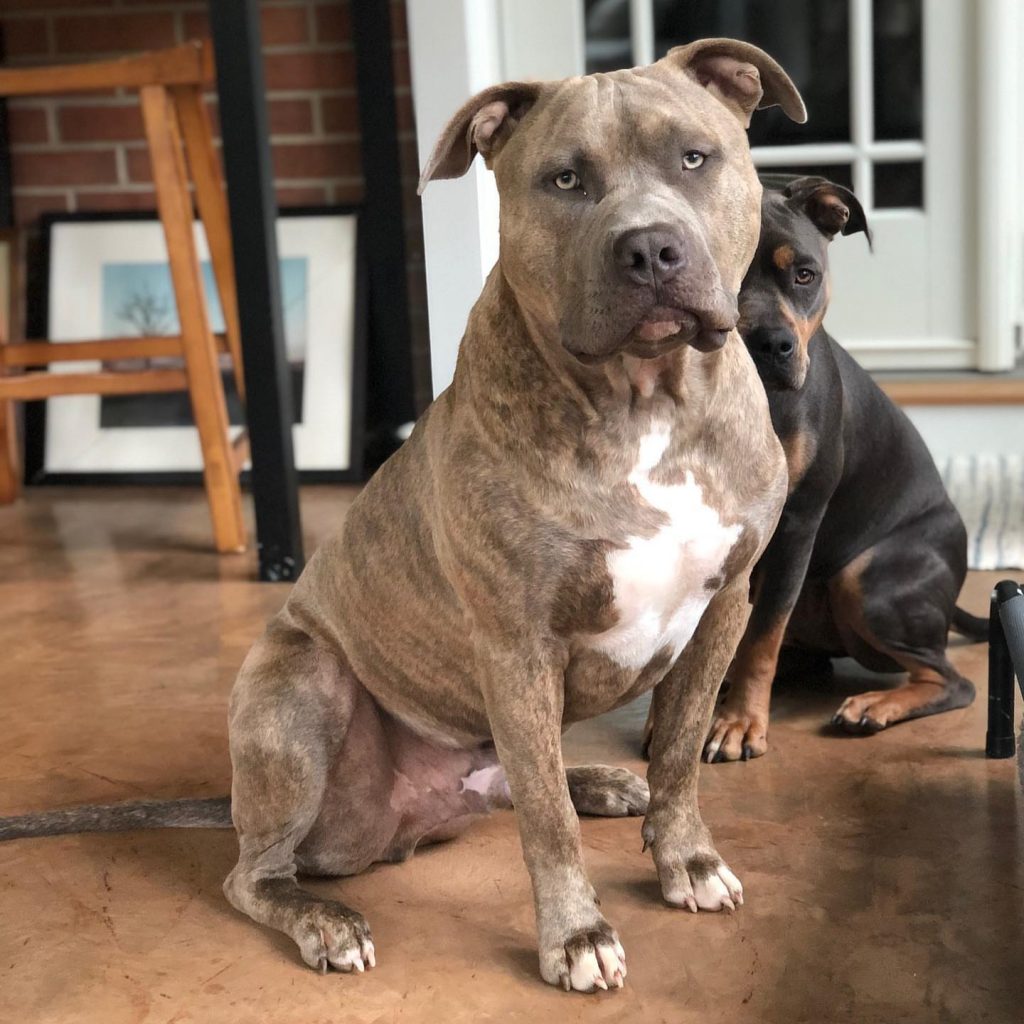Welcome to our blog post all about brindle pitbulls! If you’re curious about this unique dog breed and want to learn more, you’ve come to the right place. Brindle pitbulls have gained significant popularity over the years due to their distinctive characteristics and loyal nature. In this post, we aim to provide you with comprehensive information about brindle pitbulls, covering various aspects such as their appearance, temperament, care requirements, and addressing common misconceptions.
Brindle pitbulls are known for their striking coat color pattern, which sets them apart from other dog breeds. Their coat showcases beautiful tiger-like stripes or a reverse pattern that captivates the eye. Beyond their aesthetics, brindle pitbulls possess a remarkable temperament that defies stereotypes often associated with their breed. They are loving, affectionate, and devoted companions, making them fantastic family pets.
The purpose of this content is to offer you valuable insights into the world of brindle pitbulls. We will delve into their physical features, exploring the various brindle patterns they can exhibit. Additionally, we will discuss their temperament and personality traits, debunking misconceptions surrounding their aggression. You will also find useful guidance on caring for a brindle pitbull, including exercise needs, grooming requirements, and nutritional considerations.
We understand that there may be misconceptions or misinformation floating around about brindle pitbulls. That’s why we are committed to providing accurate and reliable information to help you understand this breed better. We’ll address any common misconceptions and clarify the true nature of brindle pitbulls, showcasing their potential as loving and loyal companions.
So, whether you’re considering adopting a brindle pitbull or simply want to expand your knowledge about dog breeds, this blog post will serve as your comprehensive guide. Let’s embark on this journey to discover the unique world of brindle pitbulls and unlock the secrets behind their incredible charm and unwavering devotion.
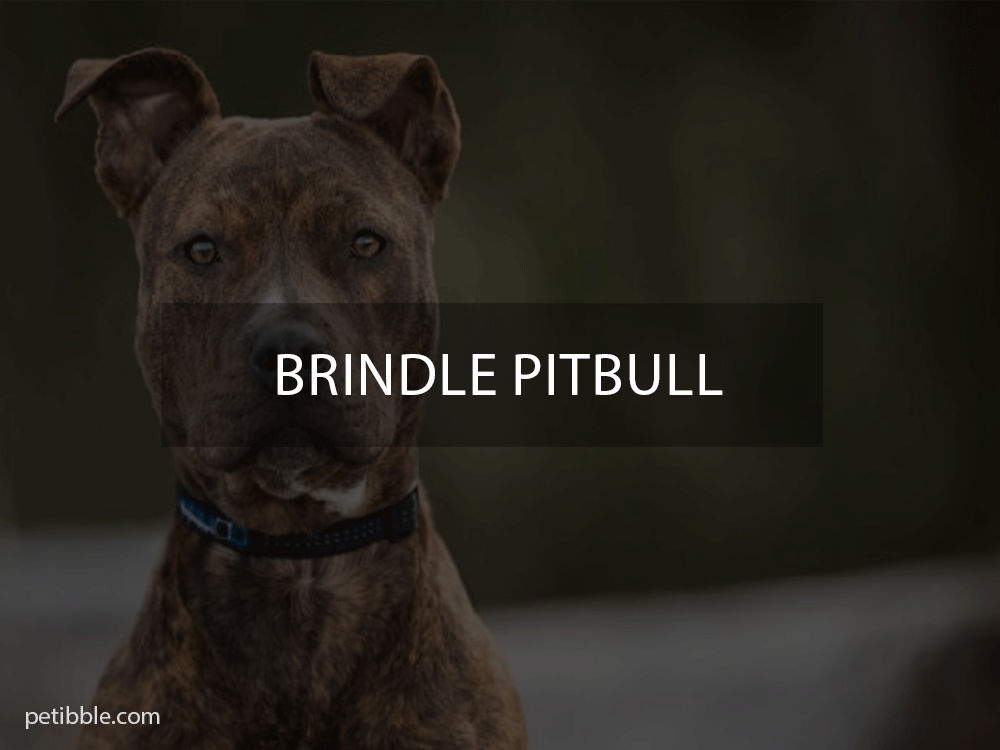
Physical Features of Brindle Pitbulls
Brindle pitbulls possess a distinct and eye-catching appearance that sets them apart from other dog breeds. Let’s explore their physical features, including their coat color pattern, body structure, and size, to truly appreciate their unique beauty.
Coat Color Pattern:
Brindle pitbulls stand out for their exclusive coat pattern, which consists of a base color and darker stripes or spots. The brindle effect can differ from dog to dog; some possess prominent stripes, while others may have more subdued coloring. This fur pattern evokes the markings on tigers or other wild animals, providing them with a unique look.
Body Structure:
Brindle pitbulls typically have a muscular and athletic build. They have a well-defined jawline, a broad and deep chest, and strong, sturdy legs. Their overall physique exudes power and agility, reflecting their history as working and sporting dogs.
Size:
Brindle pitbulls range from medium to large in size. Adult males stand between 18 to 22 inches (46 to 56 cm) at shoulder height and weigh 35 to 60 pounds (16 to 27 kg). Females are slightly smaller usually measuring 17 to 20 inches (43 to 51 cm) and weighing 30 to 50 pounds (14 to 23 kg). Size can vary based on genetics and breeding.
You may like: Albino Pitbull
Variations in Brindle Patterns:
Brindle pitbulls can exhibit different variations in their coat color patterns, each with its own unique appeal. Some common variations include:
- Tiger Brindle: This pattern resembles the stripes seen on a tiger, with bold, dark stripes contrasting against a lighter base color.
- Reverse Brindle: In reverse brindle pitbulls, the dark stripes or patches are more prominent, creating an overall darker appearance. The base color is lighter and acts as the background against which the darker markings stand out.
- Black Brindle: Black brindle pitbulls have a predominantly black coat with brindle stripes. The base color may be black or a dark shade of another color, and the brindle pattern appears as black stripes or spots.
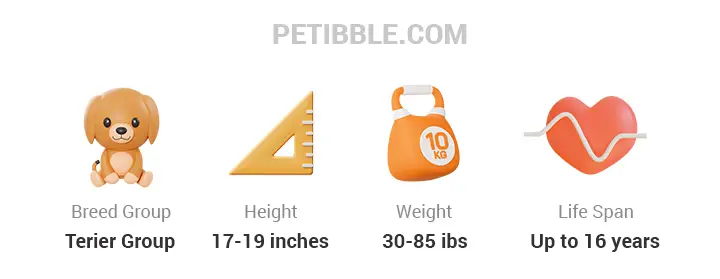
Temperament and Personality Traits of Brindle Pitbulls
Brindle pitbulls have garnered a reputation for their unique temperament, which often contradicts common misconceptions about their aggressiveness. Let’s delve into their true nature and highlight the qualities that make them exceptional family pets.
Dispelling Misconceptions:
One prevailing misconception about brindle pitbulls is their supposed aggressiveness. However, it’s crucial to understand that a dog’s temperament is influenced by various factors, including genetics, socialization, and training. When responsibly bred and properly raised, brindle pitbulls can be gentle, friendly, and highly sociable animals.
Loyal, Affectionate, and Friendly:
Brindle pitbulls are known for their unwavering loyalty and affection towards their human family members. They form deep bonds with their owners and thrive on human companionship. Whether it’s cuddling on the couch or joining in family activities, these dogs are happiest when surrounded by their loved ones. They are often described as loving and friendly, eager to please and shower their owners with affection.
Potential as Family Pets:
Brindle pitbulls can make wonderful additions to families, including those with children. They are often patient, gentle, and tolerant, making them well-suited for households with kids. However, as with any dog breed, supervision and proper introductions between dogs and children are essential to ensure mutual respect and safety.
Intelligence and Trainability:
Bridle Pitbulls are extremely intelligent dogs that possess a strong capacity for learning. They respond best to consistent positive reinforcement training, making them an exceptional choice for carrying out commands as well as participating in obedience trials, agility competitions, or other advanced tricks. Their trainability and intelligence make Brindle pitbulls the perfect companion for any active family or individual.
Potential for Special Roles:
Brindle pitbulls have demonstrated their potential in various specialized roles. Their loving nature and innate empathy make them suitable candidates for therapy dog work, providing comfort and support to individuals in need. Additionally, their intelligence and agility allow them to excel in working dog roles, such as search and rescue, tracking, or even as service animals for individuals with disabilities.
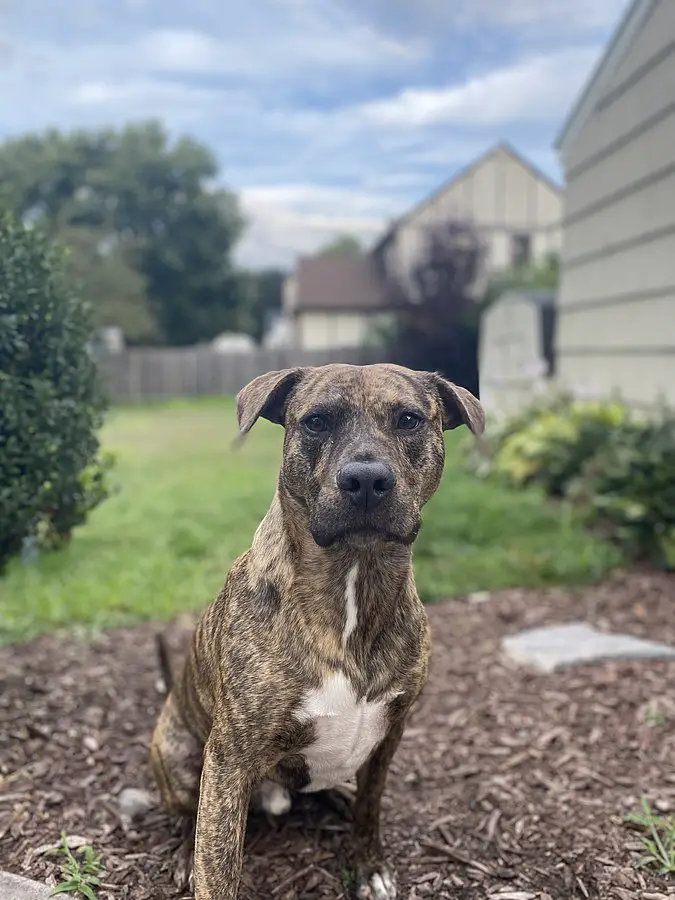
Brindle Pitbull Care and Training
Caring for a brindle pitbull involves providing them with the necessary physical and mental stimulation, ensuring their overall well-being. Let’s explore guidelines for their care, including exercise needs, grooming requirements, nutritional considerations, and the importance of early socialization and obedience training.
Exercise Needs:
Brindle pitbulls are active and energetic dogs that require regular exercise to maintain their physical and mental health. Aim for at least 60 minutes of daily exercise, which can include brisk walks, jogging, playtime at the dog park, or engaging in interactive games like fetch. Meeting their exercise needs helps prevent boredom and destructive behavior.
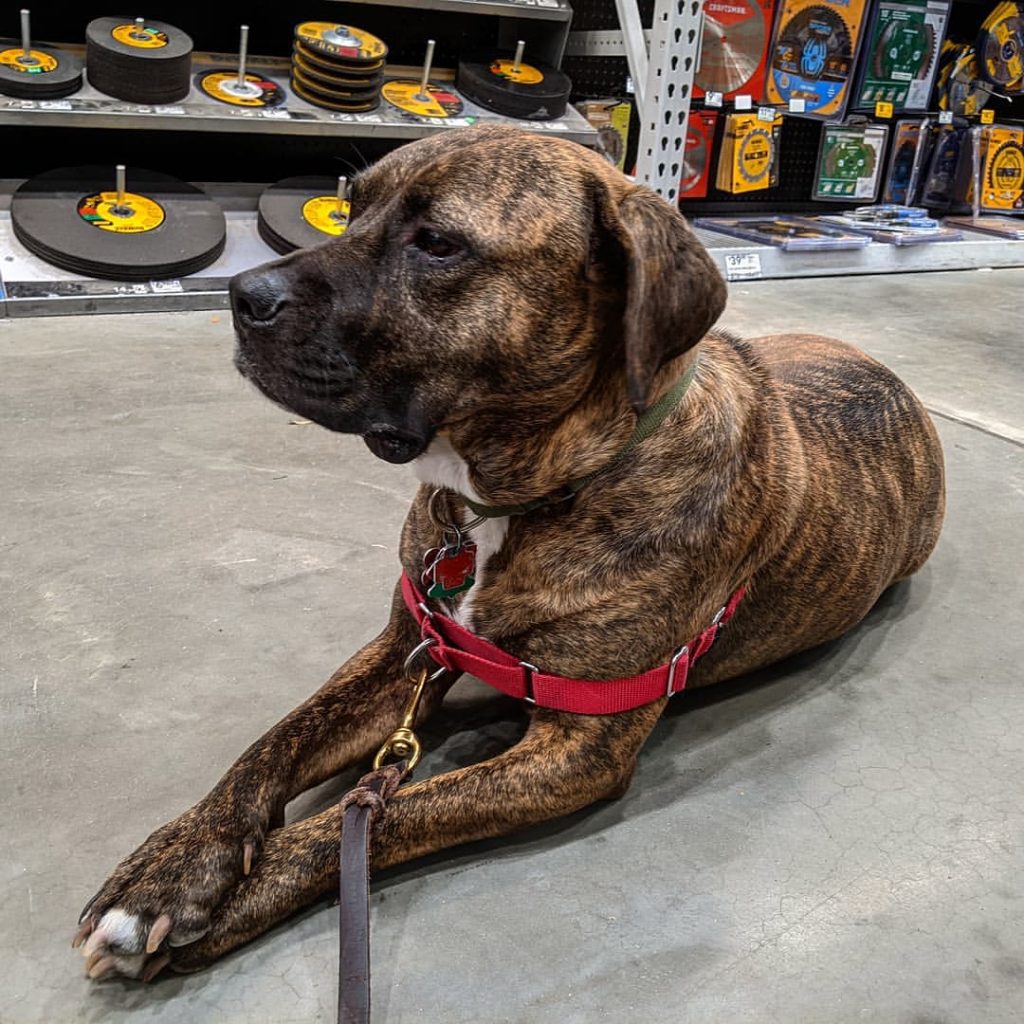
Grooming Requirements:
Grooming a brindle pitbull is relatively low-maintenance. They have short, smooth coats that only require occasional brushing to remove loose hair and keep their coat in good condition. Regularly check their ears for cleanliness and trim their nails as needed. Additionally, maintain good dental hygiene by brushing their teeth regularly to prevent dental issues.
Nutritional Considerations:
Providing a balanced and nutritious diet is essential for the overall health of a brindle pitbull. Consult with your veterinarian to determine the appropriate portion sizes and the best quality dog food that meets their specific needs. Be mindful of their calorie intake to prevent weight gain, as obesity can lead to various health issues. Always ensure access to fresh water throughout the day.
You may like: Gator pitbull
Early Socialization and Obedience Training:
Early socialization is crucial for brindle pitbulls to develop good behavior and proper manners. Expose them to various environments, people, and other animals from a young age. This helps them become well-adjusted and confident dogs. Obedience training is equally important, teaching them basic commands such as sit, stay, and recall. Positive reinforcement methods work best with brindle pitbulls, rewarding good behavior with treats, praise, and affection.
Managing Energy Levels and Mental Stimulation:
Brindle pitbulls are intelligent dogs that require mental stimulation alongside physical exercise. Engage their minds through obedience training sessions, puzzle toys that challenge their problem-solving abilities, and interactive play. Mental stimulation helps prevent boredom, promotes good behavior, and strengthens the bond between you and your brindle pitbull.
Health Considerations for Brindle Pitbulls
While brindle pitbulls are generally robust and healthy dogs, like any breed, they may be prone to certain health issues. It’s important to be aware of these potential concerns and take proactive measures to ensure their well-being. In this section, we will outline common health issues associated with brindle pitbulls, provide guidance on preventive care, and emphasize responsible breeding practices.
Common Health Issues:
- Allergies: Brindle pitbulls can be susceptible to allergies, including food allergies, environmental allergies (such as pollen or dust mites), and skin allergies. Symptoms may include itching, rashes, ear infections, or gastrointestinal issues.
- Hip Dysplasia: Hip dysplasia is a common orthopedic condition where the hip joint doesn’t develop properly. It can lead to discomfort, lameness, and arthritis. Regular exercise, maintaining a healthy weight, and responsible breeding practices can help reduce the risk.
- Skin Conditions: Brindle pitbulls may be prone to various skin conditions, such as dermatitis, folliculitis, or allergies. These can cause itching, redness, sores, or hair loss. Regular grooming, proper nutrition, and addressing any underlying allergies are essential for maintaining their skin health.
You may like: Pitbull black mouth cur mix
Preventive Care:
- Regular Veterinary Check-ups: Schedule routine veterinary check-ups to monitor your brindle pitbull’s overall health, catch any potential issues early, and ensure they are up to date on vaccinations, parasite prevention, and routine screenings.
- Vaccinations: Follow a proper vaccination schedule as recommended by your veterinarian. Vaccinations protect against common diseases such as rabies, distemper, parvovirus, and canine hepatitis, among others.
- Preventive Measures: Maintain good hygiene by regular bathing, ear cleaning, and dental care. Provide a balanced diet, ensure access to clean water, and offer appropriate exercise to promote their overall health and well-being.
Responsible Breeding Practices and Genetic Health Testing:
Responsible breeding practices are crucial in minimizing the risk of inherited diseases in brindle pitbulls. Reputable breeders conduct genetic health testing on their breeding stock to identify potential health issues and reduce the likelihood of passing them on to offspring. When considering getting a brindle pitbull, opt for a breeder who prioritizes the health and well-being of their dogs and can provide documentation of genetic health testing.
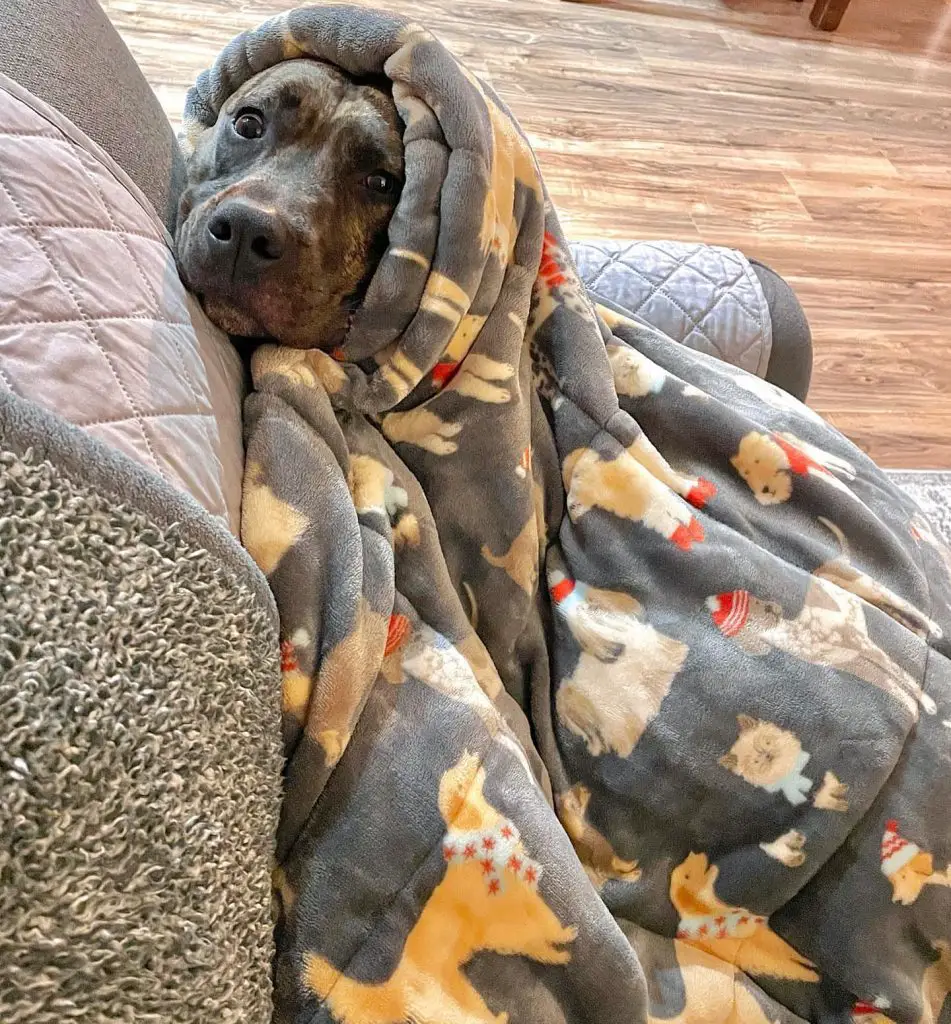
You may like: Everything you need to know about black mouth cur lab mix
Conclusion:
In conclusion, brindle pitbulls are truly remarkable dogs with unique qualities that set them apart. Throughout this blog post, we have explored their physical features, temperament, care requirements, and health considerations. We have debunked misconceptions, highlighted their loyalty, affection, and friendly nature, and discussed their potential as family pets.
Brindle pitbulls possess a striking coat color pattern, with variations such as tiger brindle, reverse brindle, and black brindle, adding to their allure. Their loving and loyal temperament defies stereotypes, and they thrive as affectionate companions, making them ideal for families seeking a devoted and friendly addition.
We have provided guidelines for their care, emphasizing exercise needs, grooming requirements, and nutritional considerations. Early socialization and obedience training were also emphasized as key factors in shaping their well-rounded behavior. By managing their energy levels and providing mental stimulation, we can ensure their happiness and fulfillment.
Additionally, we discussed common health issues associated with brindle pitbulls, stressing the importance of regular veterinary check-ups, vaccinations, and preventive measures. Responsible breeding practices and genetic health testing were highlighted as essential in reducing the risk of inherited diseases and promoting the overall health of the breed.

